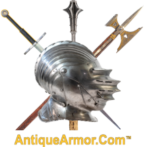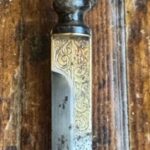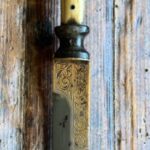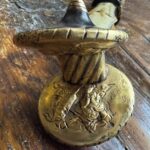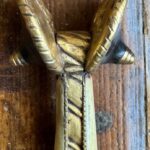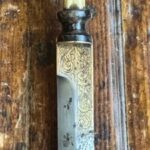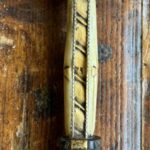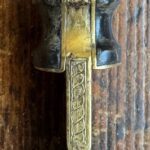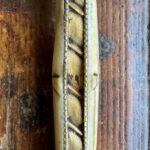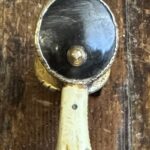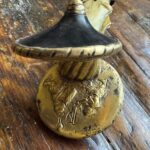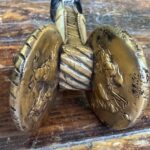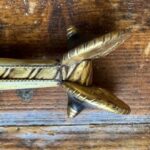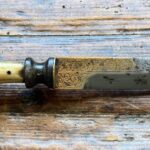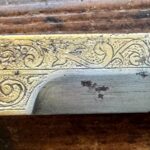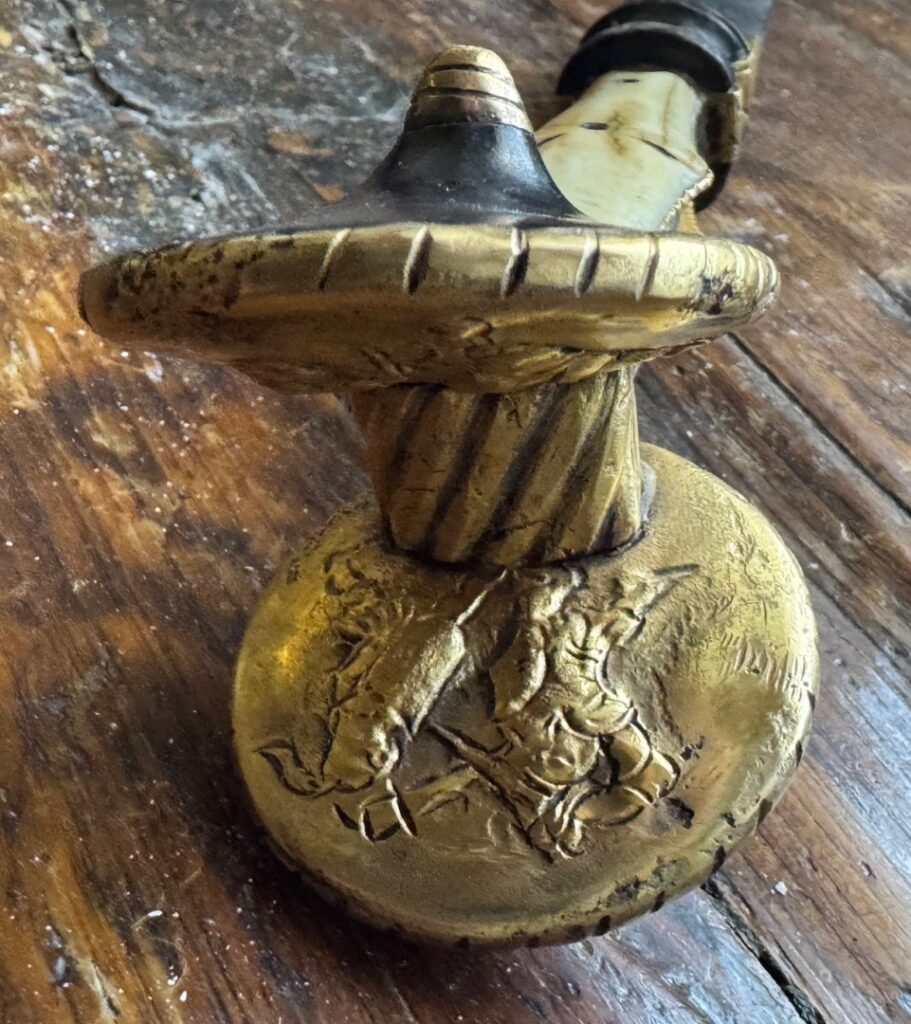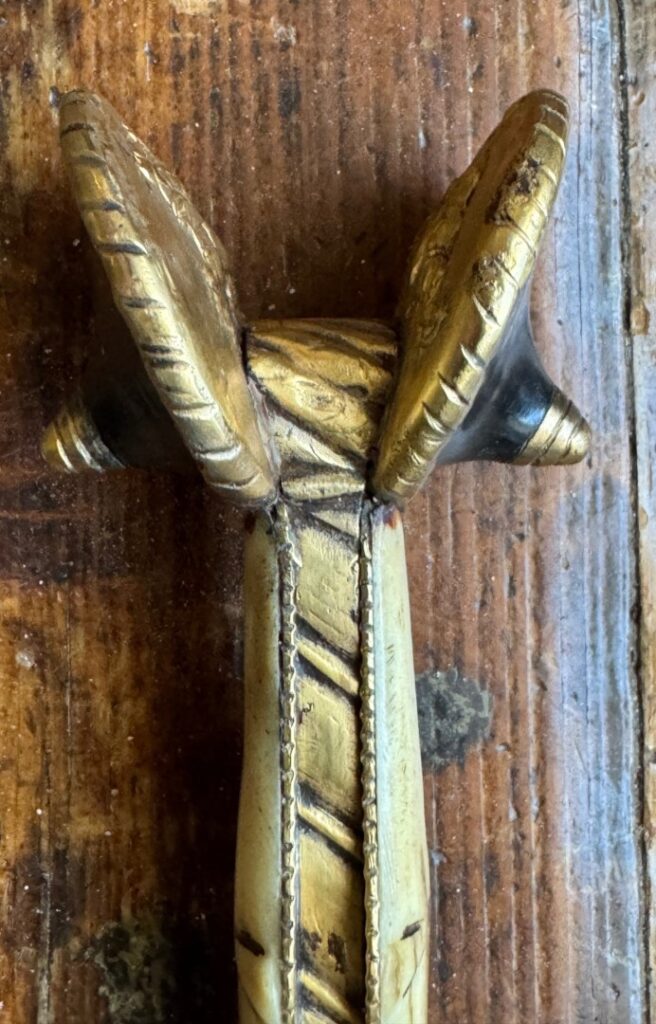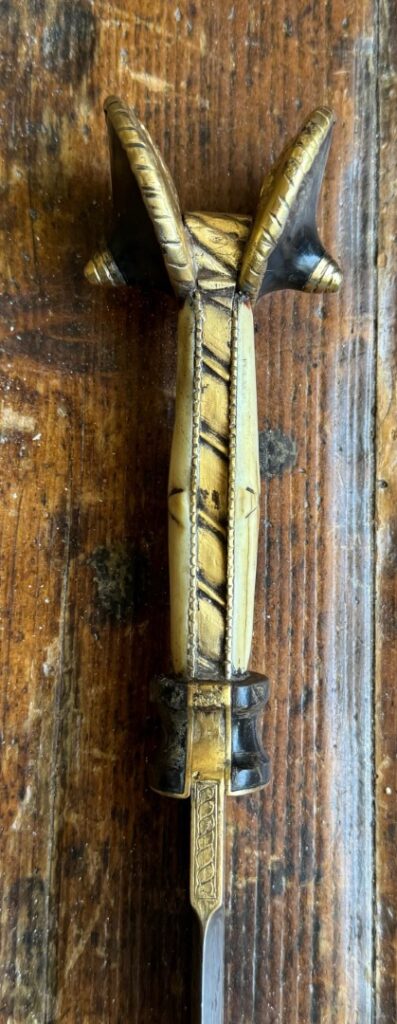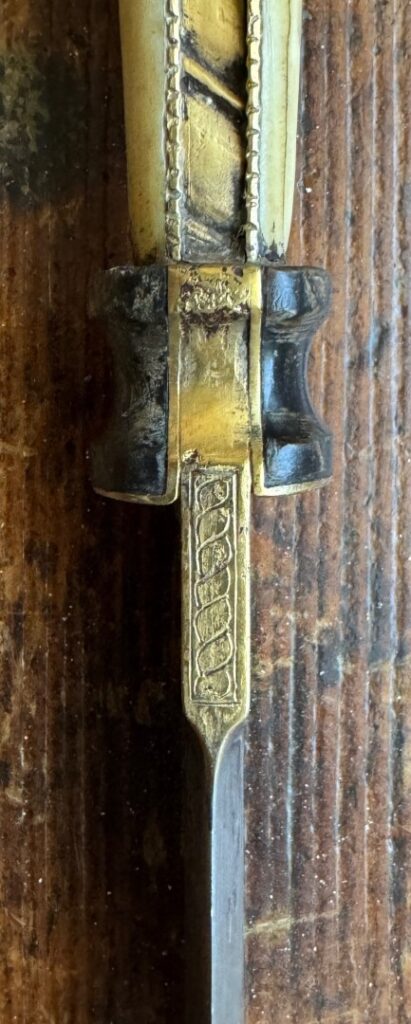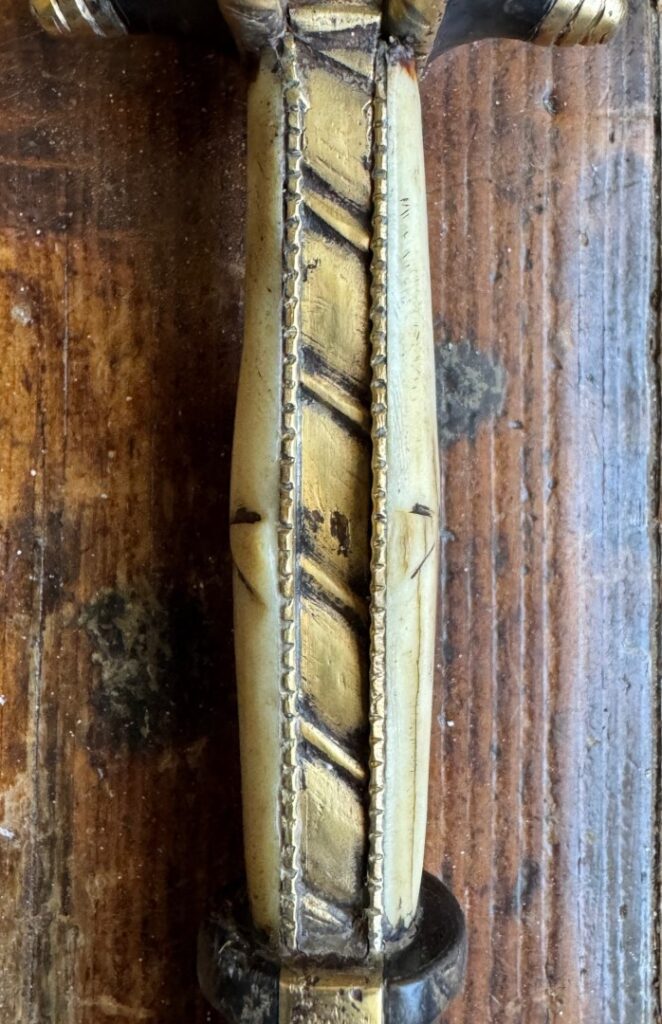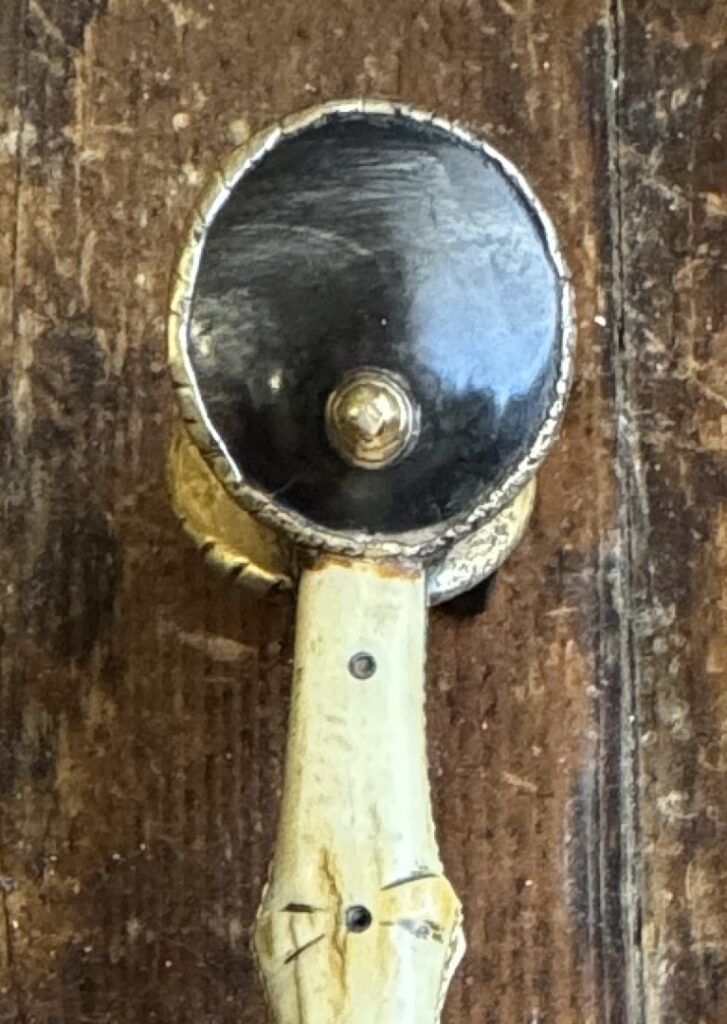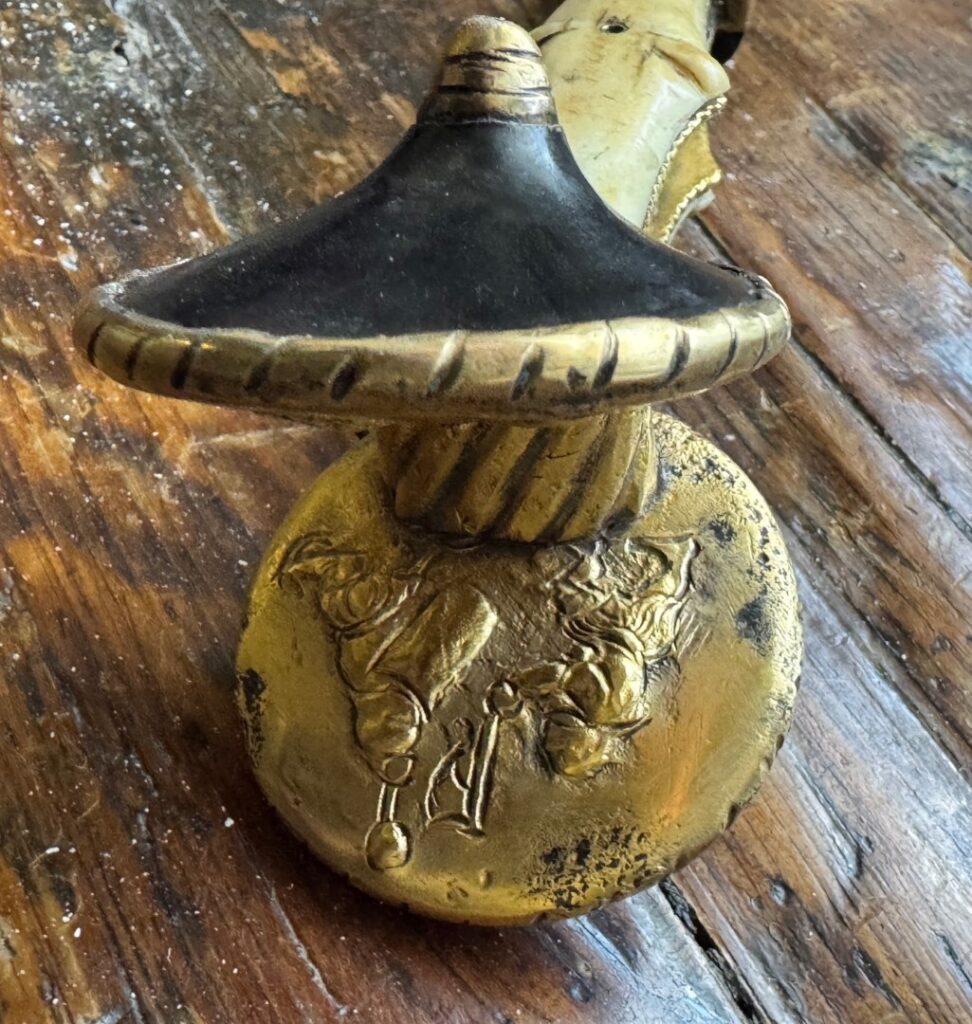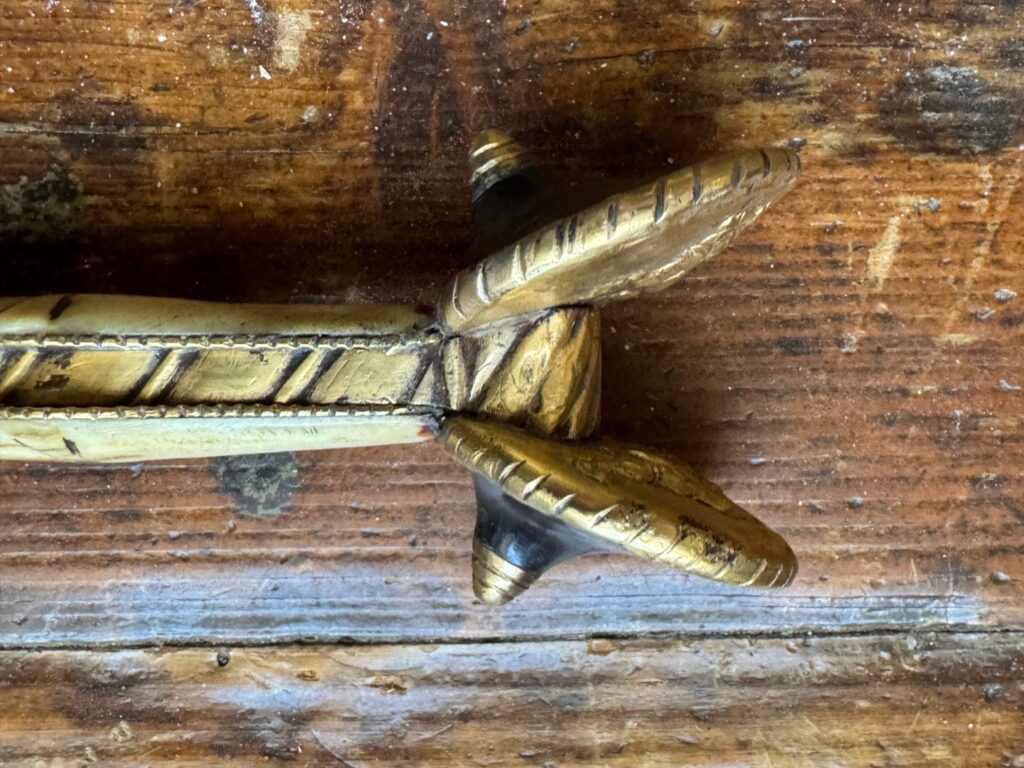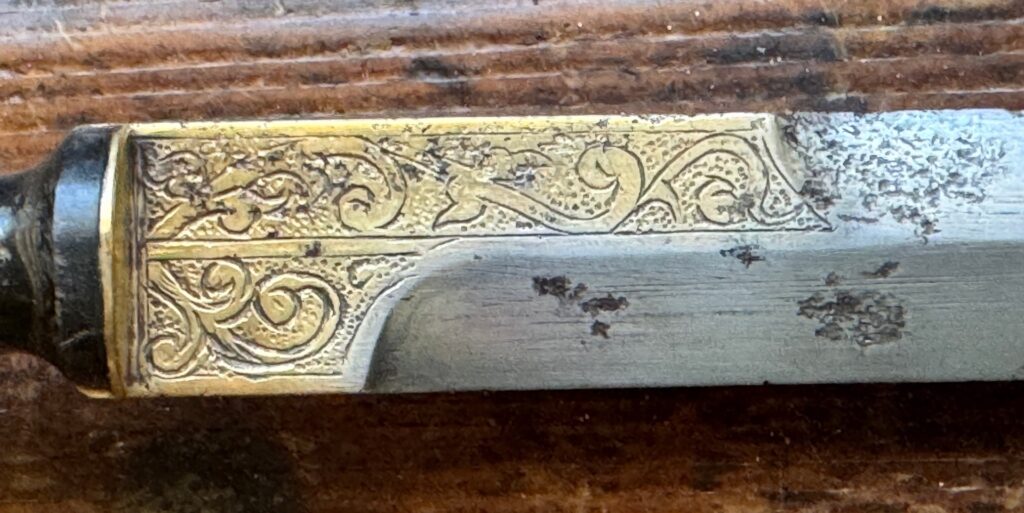1755) GILDED, ETCHED AND CHISELED ITALIAN EAR DAGGER IN THE TASTE OF 1500s:
Introduction: An ear dagger is an exceptionally rare and exotic form of dagger created in the late 1300s. The golden era for ear daggers was 1450–1550. Its most prominent feature is a very distinctive shape (somewhat resembling a human ear) consisting of twin disks (made of one piece of metal) facing each other at the pommel.
Discussion: The ear dagger has a strong Eastern influence, especially Persian. Since the Bronze Age, Persian swords and daggers of similar form have been produced. Ear daggers were first introduced in Europe in the Iberian Peninsula. They presumably originated from the Moors and quickly spread to Italy, Germany, France, England, and the rest of Western Europe during the 1400s. The ear dagger in its day was only owned by the wealthy and powerful. There are very few plain ear daggers made for peasants or foot soldiers that are known. In totality, there were not that many ear daggers ever made. The ear dagger’s rarity and mystique make it one of the most sought-after daggers by collectors.
Dating ear daggers is based on changing fashion:
• In the late 1300s, the ears on ear daggers were parallel. Grips were wide and bountiful. Rondel guards were large. Some daggers had single-edged blades until the early 1400s. • After 1450, the ears started extending in different directions, and the guard became slightly smaller. Grips were reduced in size.
• After 1500, the ears started extending even further, up to 150 degrees, and the guard became slightly smaller. Grips were again reduced in size.
• After 1550, the ears started extending even further, to the point of being almost horizontal, and the guard was so small it was almost nonexistent or integral to the blade. Grips were reduced in size even more.
• From 1400–1520, blades were of two types: (1) leaf-shaped or (2) with a narrow lozenge-shaped section. 19th-century reproduction ear dagger. Like other rare Medieval daggers, the scabbards of ear daggers are nearly nonexistent–very few have survived.
Early daggers with large rondel guards had an all-leather sheath like those found on any rondel dagger. After circa 1500, they became more exorbitant with throats and chapes and were decorated en suite with the dagger hilt. Some had compartments for auxiliary daggers and sharpeners.
Description: Constructed with a thick blade with a medial ridge tapering slowly to a point. A false edge at the top is about a third the length of the blade and on the bottom a false edge for about one inch. This false edge area constitutes its ricasso and is etched in foliage and gilded. The blade with some pitting. The grip is made of bone, the sides of the grip exposing the tang decorated with slanted carved hash marks and gilded roping on the bone grip—a small short guard made of the same dark material ( possibly tortoiseshell) as the ears. The inside of the ears are gilded and decorated with chiseled Roman knights.
Conclusion: Make no mistake about it; an ear dagger is probably the rarest and most sought-after Medieval dagger. The last ear dagger to sell at auction (Sotheby’s, October 6, 2010, Lot #250) sold for over $5.5 million to a wealthy Middle Eastern buyer! This exorbitant price doesn’t mean it was worth that much. It means two people of tremendous wealth wanted it that bad. Sadly, you will probably never be able to acquire a period ear dagger.
Good reproductions of an ear dagger , such as this one made in the 1800s, usually sell for over ten thousand dollars! This early reproduction is priced at a fraction of its actual market price.
This is the closest you will ever get to owning an ear dagger. The construction of this ear dagger is superb. It was made by a true master smith probably up to 200 years ago and has already fooled many knowledgeable collectors and scholars into thinking it’s real. Priced to sell immediately at a fraction of what lesser reproductions sell for. ACT NOW. This dagger should sell, and considering this is the best ear dagger I have had in 40 years, I do not expect to get another this good any time soon!!!*
